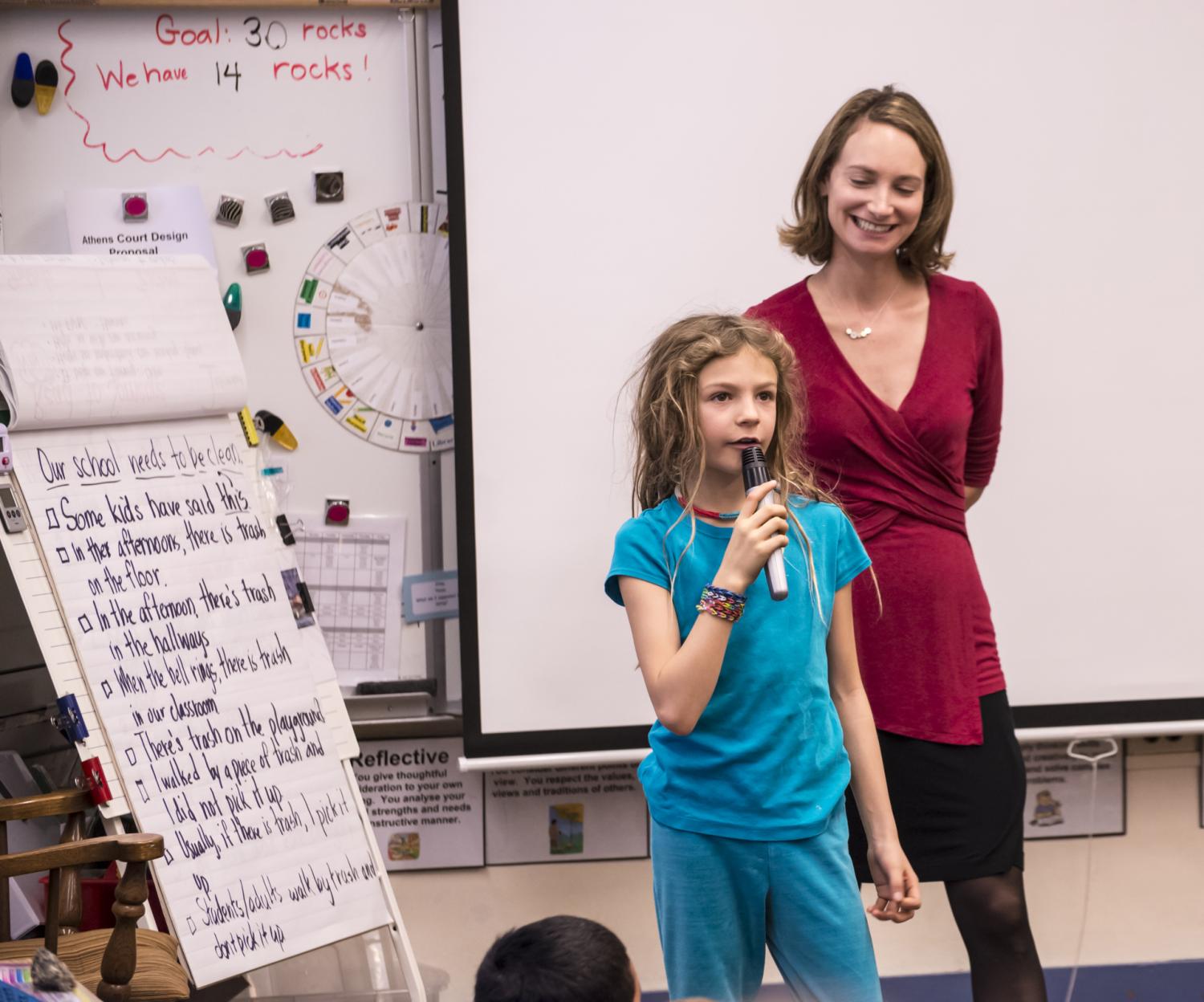CEDaR's Growing Up Boulder program spins off as a nonprofit

When Growing Up Boulder (GUB) began in 2009, its goal was to empower young people to influence the local issues which affected their lives. For the past 12 years the program was a part of CU Boulder's Community Engagement, Design and Research (CEDaR) Center. Now one of the most successful child-friendly city initiatives in the world, it's being spun off as an independent nonprofit under the fiscal sponsorship of the Colorado Nonprofit Development Center.
“Growing Up Boulder will continue its deep partnership with CU Boulder as it evolves during its next phase," said Mara Mintzer, GUB's director. "It grew from a strong foundation in academia, and the students and faculty have been key to its success."
The relationship between CEDaR and GUB is a model for how the university can develop, nurture and then spin off nonprofit activities, says Brian Muller, associate professor and CEDaR director.
“Growing Up Boulder began as a service-based research project and evolved into a program that is now more deeply embedded in the community than the university," Muller says. “It will continue as a CEDaR affiliate with more flexibility to raise money and cultivate new relationships to expand its programs. Spinning it off strengthens GUB and benefits all its partners."
Over the years GUB grew to become one of the most successful child-friendly city initiatives in the world. Some of GUB's largest successes include Mintzer's 2018 TED Talk “How Kids Can Help Design Cities," viewed 2.3 million times and translated into 21 languages; GUB’s “child-friendly city map project,” which brought together more than 30 organizations and 700 young people to create the nation’s first printed, bilingual map designed by kids for kids; and the award-winning book, "Placemaking With Children and Youth: Participatory Practices for Planning Sustainable Communities," co-authored by GUB founders and faculty.
University roots
In December 2008 Growing Up Boulder was conceived by David Driskell, director of community planning and sustainability for the city of Boulder, and Willem van Vliet, CU Boulder professor (emeritus) and CEDaR fellow, as an effort to make Boulder one of the nation’s first child-friendly cities, recognizing the rights and interests of children in local policy, law, programs and budgets as outlined in the United Nations Convention on the Rights of the Child. Louise Chawla, CU Boulder professor (emerita) and CEDaR fellow, was also formative in GUB’s development.
GUB formally launched in the spring of 2009 through an MOU between CU Boulder, the city of Boulder and the Boulder Valley School District, working in partnership with local nonprofits, businesses, and many participating children and youth. Its overall goal was to bring about a culture change so that youth participation in local affairs would no longer be extraordinary, but mainstream and routine. GUB created programming that helped local youth provide critical input on matters of city planning, education, sustainability, social justice and human rights. It supported a new generation of civic leaders, who tangibly improve their communities by sharing recommendations for city and community design and decision-making.
- Contributed to key city planning guidelines and policies, including seven master plans for open space and mountain parks, resilient cities, and transportation, and more.
Engaged more than 6,000 Boulder area kids on more than 100 city and community projects. Many program participants work with GUB for three months or more.
Upheld an internal standard to ensure that at least 50 percent of participating program children and youth are from historically marginalized groups.
Worked with more than 60 local and county partners to support hundreds of ideation sessions, after-school enrichments, and community engagement events.
Widely cited academic book chapters and journal articles.
Keynote addresses at national and international conferences.
Local, national, and international media coverage.
Training, lectures, and consulting sessions for many global partners, ranging from government staff and elected officials, young people, educators and academics.
GUB has been a part of CEDaR and housed in the Program for Environmental Design for about 12 years, working in the context of an overall CEDaR philosophy that focuses on partnerships with city governments and community organizations; participatory action research; interdisciplinary collaboration across campus; integrated research by undergraduates, graduate students and faculty; and engagement with low-income and minority populations.
Joint CEDaR and GUB initiatives include the Hill Redevelopment Project, a three-year effort to build engagement among the varied voices in development policy on the Hill. During this project, GUB worked with a Flatirons Elementary fourth-grade class to develop ideas to make the 11th Street Corridor a fun and safer place for people of all ages. In another joint CEDaR effort to develop innovative urban design for manufactured housing communities, GUB engaged with the Ponderosa Mobile Home Park community to encourage brainstorming with children and parents around the design of green spaces, playgrounds and safety, as well as adding new amenities to the park.
In addition, CEDaR provided the GUB partnership with services including office space and fiscal, computer, human resources and communications support; staff oversight; and management of joint projects and MOUs.
GUB's evolution into a new phase will be celebrated at a fundraiser on May 4.

